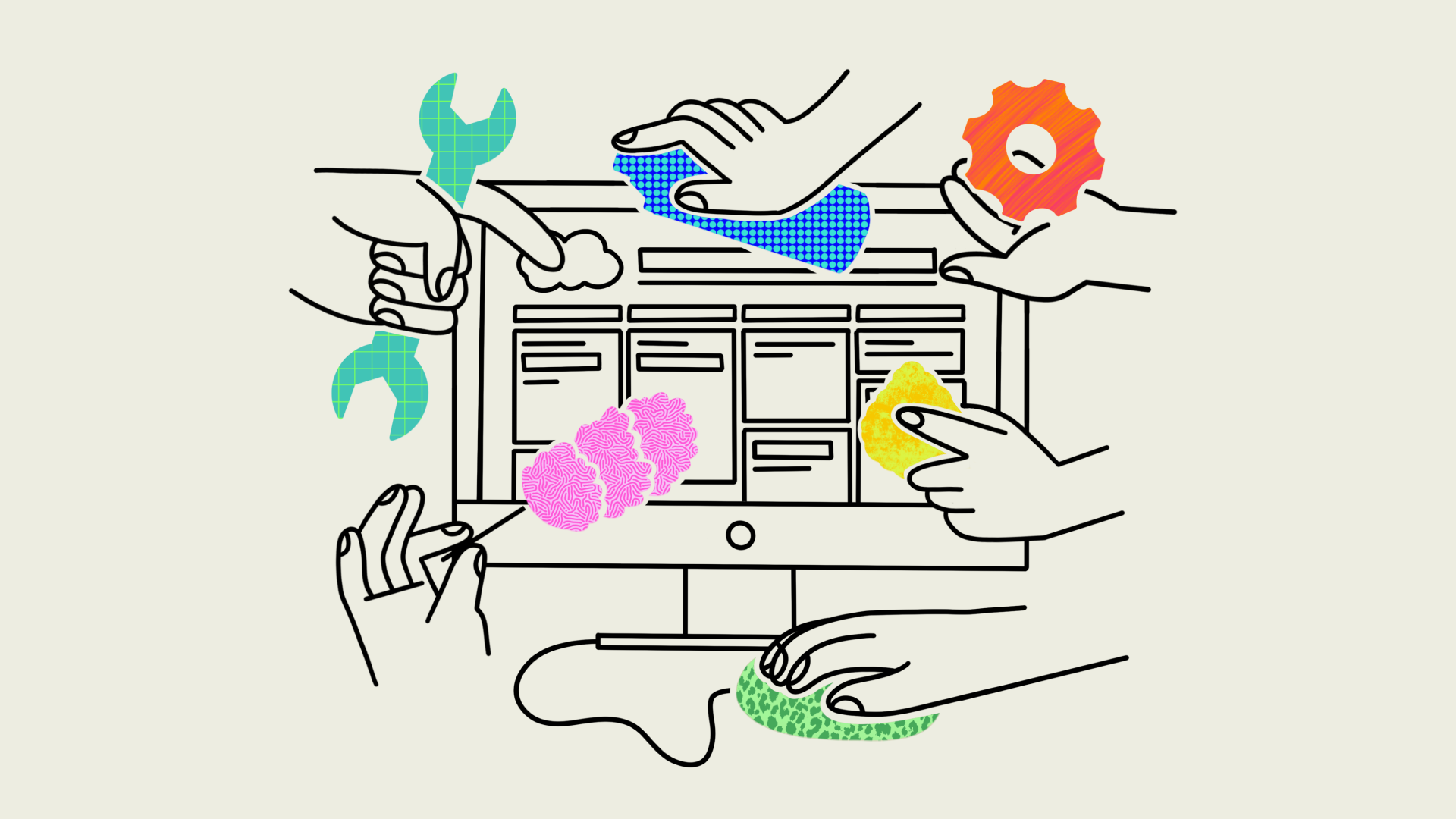
Salesforce is the most powerful CRM available—at least, if you ask the company’s dedicated fan base. But it can also be the most overwhelming and complicated to utilize. Many businesses who invest in Salesforce become paralyzed by its capabilities and don’t take advantage of the tool, but keep renewing their subscription like a guilt-ridden gym membership.
At Think Company, we work with companies who want to harness the power of Salesforce by creating modern interfaces to serve their business needs. We rely on four fundamentals to make this work a success, and your team can utilize these too. Approaching salesforce work this way will result in a modern, future-thinking interface rather than something outdated from the start.
How to begin
Whether you’re just getting started with Salesforce or are diving back in, it’s essential to begin by assembling a small team of stakeholders, designers, and developers who can drive this work and bring both a high-level and practitioner perspective to the table. We recommend bringing in stakeholders who:
- Have a clear picture of your business needs and requirements
- Possess a strong working knowledge of the existing business rules behind what you’re building
- Are subject matter experts familiar with the needs of the end-user, such as UX designers, product owners, researchers, and content strategists
- Have a deep understanding of the capabilities, best practices, and limitations of Salesforce
With your team assembled, it’s crucial to level set with everyone about why you’re building in Salesforce and what the limitations are. The “why” behind your project is paramount, and many teams miss that alignment. Once you’re all on the same page about what you’re building and why, it’s time to dive in.
A word about OOUX
When you’re creating in Salesforce, you will deal with “objects”—Salesforce’s term for contacts, leads, campaigns, etc. There’s a name for designing with objects in mind: Object-Oriented UX (OOUX).
OOUX is a simple yet sophisticated approach to designing interfaces of all kinds. This approach places a premium on making a digital experience easy to understand and navigate. For obvious reasons, OOUX is a natural fit for designing interfaces in Salesforce, where it’s easy to get lost and can be difficult for users to get the information they need.
At Think Company, we utilize OOUX practices to help build out a Salesforce experience long before committing to a visual design.
Four fundamentals of creating a modern Salesforce interface
1. Full integration between design and development teams
Many teams spend the first portion of a design project finalizing the designs before making a (hopefully) clean handoff to development. But in our experience, this creates roadblocks when development inevitably has to push back on a design element because it isn’t feasible or can’t have the functionality designers were looking for.
By integrating development into the design process and working in tandem as the project progresses, you’re more likely to develop designs that function the way you want them to, and minimize the chance of nasty surprises and roadblocks down the line.
2. Utilizing design tools
We approach building a Salesforce interface like any other design project. We design in a tool like Figma to iterate quickly and create a platform-agnostic design. Once we know we have a functional design that meets our business needs and Salesforce’s technical requirements, we tailor it to the platform.
3. Creating design tokens
Design tokens, or the small components that make up a design system, help alleviate decision fatigue when building a new design. We find design tokens particularly helpful when creating a Salesforce interface to make the process more efficient, and ensure the design is consistent.
4. Rapid prototyping
We work quickly to put prototypes together so we can test and iterate on our ideas. These prototypes can be relatively lo-fi (you don’t need a fully-fledged wireframe every time). Putting something together that everyone on the team can react to makes it much easier to develop and mature ideas and move closer to implementation.
Making Salesforce work for you
If you find yourself googling how to use Salesforce, you’re not alone. Most teams need help navigating the tool and putting it to work for their business. Creating a modern interface is the first step to utilizing the power of Salesforce, and establishing a cross-functional team, utilizing design tools and tokens, and iterating often can help you get there.
If you need help getting started or want to talk about having a partner throughout the process, our team can help. Put Salesforce to work for you.


